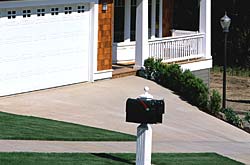Land of the Tree or Home of the Pave?
See if We Have Top-Rated
Green & Paving Contractors in Your Area

According to the Earth Policy Institute, "the U.S. area devoted to roads and parking lots covers an estimated 16 million hectares." To put it in American, that's about 61,776 square miles, or (according to Wikipedia) a bit larger than the state of Georgia. While to some this might be the go-ahead to build even more (hey, that means there are 49 other states worth of UNPAVED land, right?), for others, this is a sign that it's time to stop.
Or at least change...
Time to Hug Trees?
While road construction seems to be a never ending process, the amount of actual new roads being created is NOT spiraling out of control. In fact, the Earth Policy Institute also tells us that, "this paving of land in industrial countries [like the U.S.] is slowing as countries approach automobile saturation."
So, it seems like putting in a new, paved driveway before winter hits isn't a sin (and, hey, if you've ever shoveled snow and slush off a gravel drive, you know pavement can truly be a blessing). That said, just because we, as a nation, are paving less paradise doesn't mean that other factors in our home remodeling projects shouldn't be a little greener!
Green Building that Makes a Difference
For your next remodel or enhancement, here are a few ideas that will make the project more environmentally friendly, and may even save you some dough in the process:
Using natural building materials (like cork, bamboo, or reclaimed/sustainably harvested wood) instead of synthetic materials reduces pollution during the manufacturing process and will reduce the amount of un-biodegradable waste in the future.
Let the pros handle the tough work! Use this link to hire a local
Concrete ContractorIf you do choose to build with synthetic materials, look for products that contain recycled content. When renovating, ask your contractor which of the materials you remove from your home can be recycled.
When purchasing a new appliance, a larger initial investment in a more energy efficient unit will not only be more environmentally friendly, it will save you money in the long run (sometimes the savings are enough to cover the appliance's purchase price).
For those in more rural settings, residential-sized wind turbines are now available that can make a dramatic dent in your dependence on electricity purchased from the power company. (These turbines cost $6,000 to $22,000 to install, according to the American Wind Energy Association.)
While city dwellers don't have the room to power their homes by wind, opting for carpet, paint, finish, and other materials that are low VOC or VOC free can reduce indoor air pollution and send a message to manufacturers that you are concerned about your health, as well as the health of your planet!
More Tips & Advice For Your Home
- Related Articles
- Recent Articles

